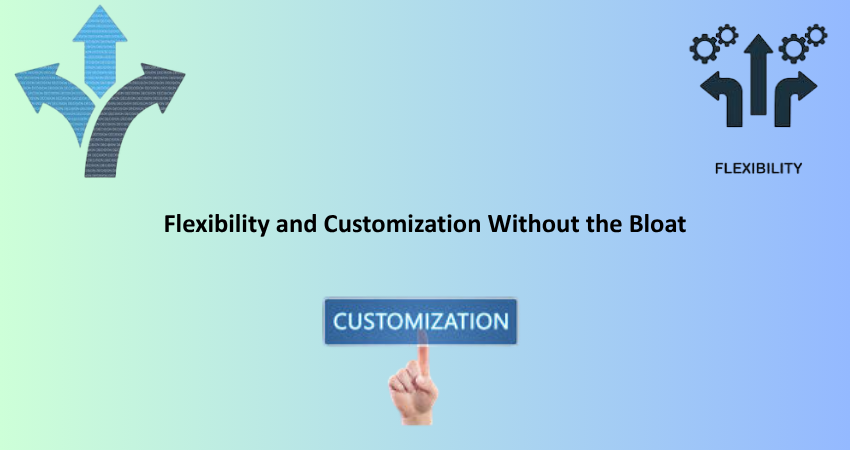
Introduction
The never-ending evolution of web development has put speed right at the top of the priority list, both for developers and users. In an era of digital where speed means success, developers feel that they can afford to be critical of themes that come loaded with features and are, therefore, heavy on resource. Hence, a reversal in preference towards lightweight themes-these themes that are created with speed and flexibility in mind-grows ever-present. Lightweight themes strip out all unwanted bells and whistles, enabling developers to build fast, scalable, and user-friendly websites that not only meet any contemporary performance standard but do so without compromising on usability.
This practice of minimalism has become more than a trend; it has turned into a reaction to the performance issues and expectations imposed by users around the world. Ubiquitous searching, such as with Google, for quick loading pages is not making it easier for the increasingly mobile user to enjoy an uninterrupted experience. As a result, this makes minimal and clean code all the more important. Lightweight themes allow developers maximum control to fine-tune every facet of a site, thereby avoiding slow performance typically associated with heavier themes. This article highlights the reasons why the developers have decided to make a switch, the benefits of lightweight themes, and how to pick one that suits their next project.
The Need for Speed: Performance Matters More Than Ever
Page Load Time and User Experience
The major cause of lightening themes is the effect of page load time delay on the experience that a user receives. Studies have shown that just a delay of about one second when loading a page is enough to lead to lower user satisfaction and increased bounce rates. Users are more likely to leave without ever triggering their interaction with the site when they arrive at a slow site. This is especially damaging for e-commerce; slow-loading sites lead to direct lost revenues. Lightweight themes reduce page load times by eliminating scripts, CSS, and elements that do not contribute directly to content or function.
Furthermore, lightweight themes empower developers to control performance optimization. Instead of relying on a theme’s insistent old features that may include dozens of scripts and stylesheets not of any importance to the project, the developer simply loads the necessary one. By this precision, the time of loading is improved ultimately giving precious moments of user experience. Fast and responsive websites give a better deal when browsing and create an atmosphere leading to engagement from users. Because performance metrics are getting their deserved attention in tools such as Google PageSpeed Insights and Core Web Vitals, developers are eager to optimize every little detail, and lightweight themes facilitate the implementation.
Mobile Performance and SEO Rankings
With mobile traffic exceeding desktop traffic in several industries, mobile optimization has been a central theme in developers’ minds. Complex layouts, heavy media files, and exorbitant JavaScript create havoc for a heavy theme on mobile sites, while a lightweight theme is designed to be mobile-first or at least very mobile-friendly. These themes achieve minimalistic design and the use of a stripped-back codebase, which is just perfect to deliver fast and smooth mobile experiences for those constantly on the move. Mobile efficiency, therefore, is not merely an appealing factor for user experience but an important SEO criterion as well.
In determining the ranking of different sites, search engines, especially Google, consider mobile performance. Sites that load fast onto mobile devices are given higher rankings; those that are slow are punished for their performance. This makes lightweight themes a strategic option for developers wanting to increase visibility and organic traffic. On the performance end, the developers can ensure crawlability, indexing speed, and user metrics with a theme that is fast; all these factors lead to a better SEO. Given the importance of visibility in today’s digital ecosystem, lightweight themes provide performance advantages that should not be ignored in the competitive landscape.
Flexibility and Customization Without the Bloat

Less Code, More Control
Minimal coding is the celebration of lightweight themes that grants unlimited power to a developer to control any aspect of the design and functionality of a website without having to deal with a delay in loading time. Most rich in features come with all possible page builders, widgets, and content types packed in it. The theme does not have anything inside it; instead, it comes as a blank canvas to be painted by the developer from the first brush strokes along with painting only those elements and plugins that really are necessary for a particular project. Hence, it saves the final website from being heavier, will be more comfortable over the years to maintain and upgrades, and ultimately improves the site efficiency.
To some, having less prebuilt functionality may seem like a disadvantage, while others see it as the perfect opportunity for them to gain. Each feature in a heavy theme comes with the potential for conflicts, dependencies, and failure points. Lightweight themes stay lean and allow the developer to debunk, trouble shoot and customize easily. Developers can write clean code without having to worry about clashing styles or bloated JavaScript. Whether integrating custom layouts, sophisticated SEO methodologies, or outside APIs-all this is possible with lightweight themes that lend themselves well to agile development workflows and development flexibility for creating every aspect of the user experience.
Compatibility With Modern Page Builders
The other major perk of lightweight themes lies in their support for modern page builders such as Elementor, Bricks, Beaver Builder, and Gutenberg. Many lightweight themes are designed to be compatible with these systems while providing starter templates and modules that work in harmony rather than conflict with them. Instead of imposing proprietary layout systems, they lay the basic structure upon which the builder provides visual design. This modular design system then leads to faster and easier development, especially when designers and content creators jointly partake in the project.
Besides, lighter themes are usually better optimized for builder integration without the need for loading any redundant style or script files. In this way, performance will be kept high while giving the creative elastic feature that many projects demand for development purposes. Developers would be able to create pages with pixel-perfect precision while not being dependent on the theme’s built-in design philosophy. This flexibility is what would offer the faster prototype load time, ease in iteration, and far freedom in visual design. This helps to future-proof the site because builders and plugins can always be updated without breaking core functionality.
Security, Maintenance, and Future-Proofing
Fewer Features, Fewer Vulnerabilities
The key point on the developer’s mind should be security, especially when an open-source platform like WordPress is concerned. Therefore, themes that pack a wide range of bundled features and third-party scripts are, comparatively, more welcoming to possible vulnerabilities. In this concept, every line of code can be taken as a potential attack vector; therefore anything that is included but never used becomes unwarranted liability. Lightweight themes directly tackle this by limiting the number of features offered and utilizing clean code with ample reviews. This results in a minimized attack surface, ensuring that maintaining site security remains an easy task.
Having fewer parts also means fewer updates; hence, maintenance workflow is simple. With a clear understanding of what will be used, developers, rather than chasing theme updates, cherish the opportunity to maintain just the preferred plugins and scripts. This very clarity ensures site stability while reducing the possibility of compatibility issues when WordPress core is updated. For freelance developers and agencies managing multiple sites, this update streamlining and security management efficiency can save a lot of time and have a long-lasting impact on client satisfaction.
Easier Debugging and Long-Term Sustainability
An important but largely neglected benefit of light themes is that they simplify debugging and long-term maintenance. The central problem for anyone attempting to figure out what went wrong with a site is the inflated theme packed with feature after interdependent feature. The lightweight theme creates a debug environment that is as barren as possible. Thus, fewer files, scripts, and dependencies are involved. This becomes extra useful for teams and clients wishing to comprehend the structure of the site after hand-off. Good documentation and lean file structures mean fewer issues coming down the pipeline.
Lightweight themes use much forethought at any rate. They hold good coding practices as well as WordPress standards, thereby ensuring longer compatibility with future versions and plugins. Sustainability thus makes for lesser pains and lower costs over the life cycle of the website. To developers wanting strong, long-lasting client solutions, lightweight themes are not just about speed; they are about planning for the long haul. As web standards themselves change, these themes present a stable, manageable avenue for scaling or redesigning without having to start all over again.
Community Support and Developer Ecosystem

Access to Shared Knowledge and Open Source Collaboration
It is, therefore, such themes that wholly inspire strong communities from users through their nature of being open source and supporting a developer-centric user base. Forums and GitHub repos are devoted to numerous groups where developers can congregate and come together to discuss some issues and share optimizations that improve the theme in every possible way. This way of working enables less-experienced developers to learn on the job and keep up to date with new changes and enhancements.
Open-source contributions mean that lightweight themes are updated more often, documented well, and tested thoroughly by real users in real-life projects. These spiders’ webs of knowledge, therefore not only accelerate problem-solving processes regarding the lightweight theme but are also breeding grounds for all sorts of new innovations. Developers working with lightweight themes can often consider themselves a part of a much larger movement toward clean, efficient, and ethical coding—values that resonate very strongly in modern web circles.
Professional Endorsements and Industry Adoption
Recently, several famous developers and WordPress professionals seem to have given their seal of approval to the lightweight themes, their ultimate pick for performance efficiency and control. It adds exposure to those built-in themes and makes their usage acceptable in client work, agency projects, and enterprise solutions. Successful case studies and experts’ recommendations instill confidence in developers to adopt lightweight themes without second-guessing their decisions.
As more celebrities keep contributing tutorials, templates, and benchmarks which compare performance, so runs the increasing appeal for lightweight themes. The phenomenon is a good virtuous cycle in the industry: the more usage within it, the best development therein and the drawing in of even more users. In other words, developers see into future-proofing their work according to contemporary trends in the industry and also be part of the possibly pragmatically and professionally rewarding big playing field.
Conclusion
The pressure continues to mount as digital landscapes become increasingly competitive. Developers are working faster and adding secure, customized and high performance websites. Lightweight themes go a long way in answering these needs by stripping off everything unnecessary to increase performance and improve maintainability. Good SEO is complemented with this theme while offering superior experience on mobile devices. Development becomes more agile and secure. For developers who appreciate control, efficiency, and future-proofing, adopting a lightweight theme is nothing less than smart-the new standard is in the offing.
In 2025 and onwards, such performance-first development practices will become ever more pronounced. The continuing evolution of tools and workflows will ensure that lightweight themes will always be at the forefront of modern web design. Developers willing to embrace this are empowered better to be clients’ demands as far as technology changes are concerned and to come up with websites that are timeless and enduring. Whatever the context-whether personal or complex business platforms are involved-lightweight themes promise the flexibility and speed to propel success in modern websites.